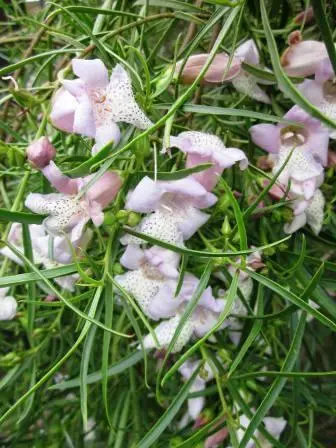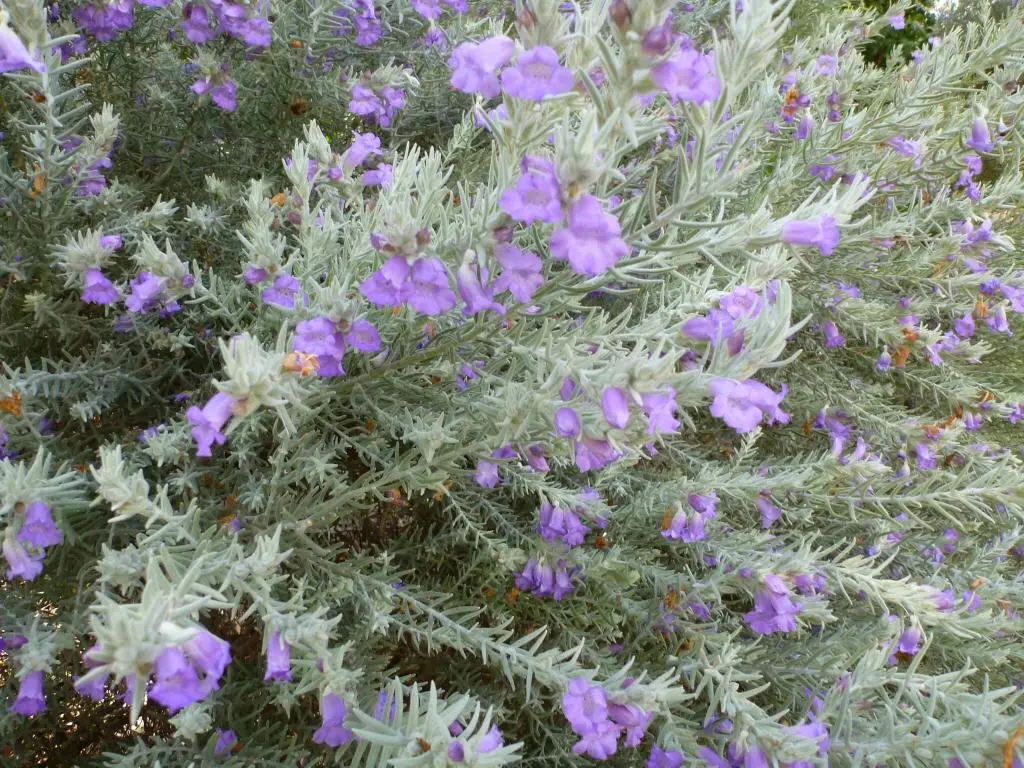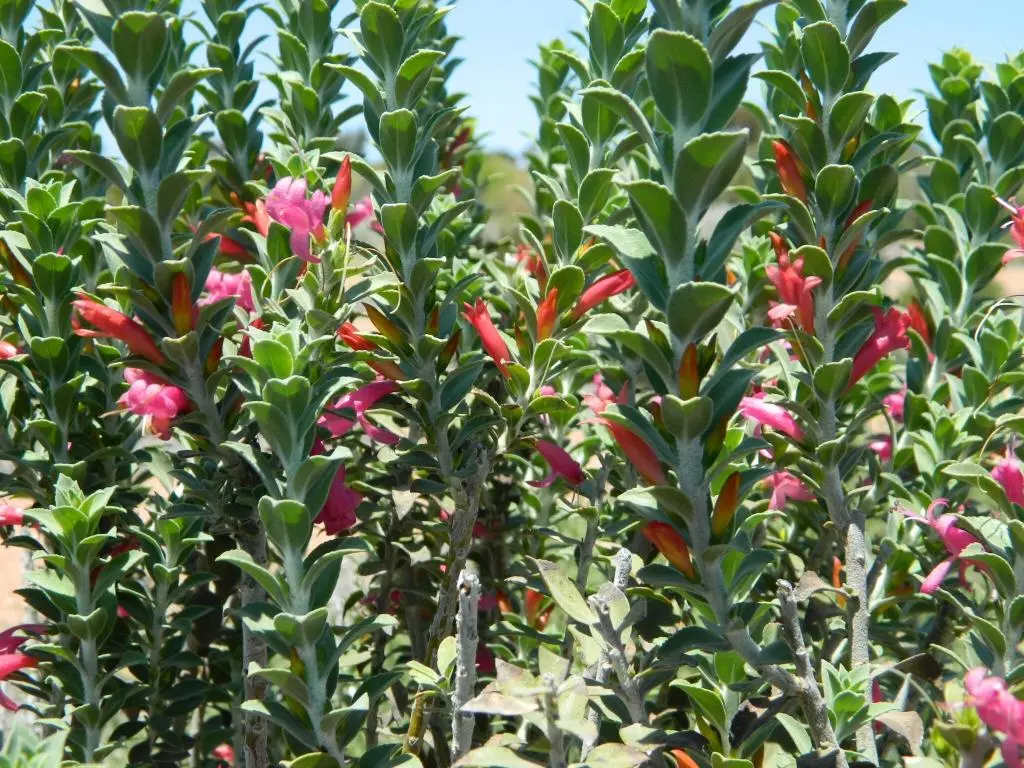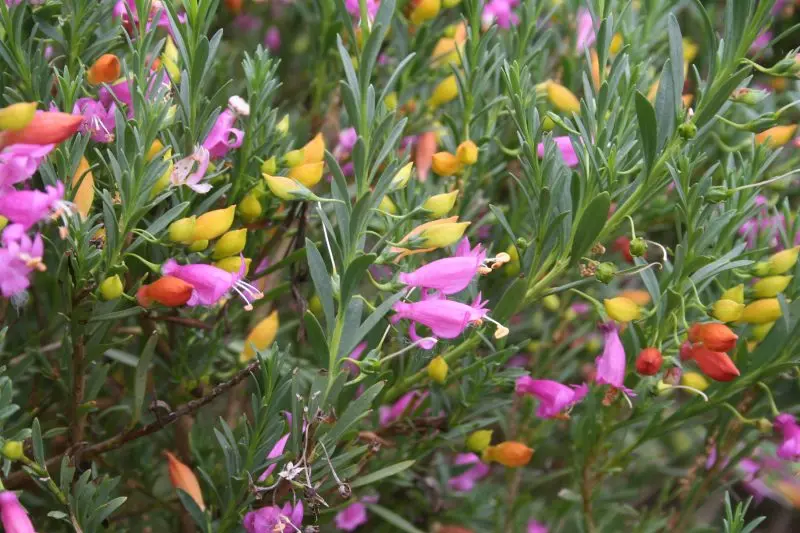There are few species that provide such a wide variety of form, flowers and foliage colour as the Eremophila. More importantly, added to this species diversity is its ability to grow and thrive in dry and frost affected areas and produce prolific flowering which attracts many species of birds and insects to the garden. Eremophila`s range from ground covers to medium to large shrubs and should find a spot in most gardens.
They can be seen growing beautifully in the main street of Cooper Pedy, down to the gardens of Victor Harbor, so are very versatile. The species that grows naturally around the pastoral arid lands in the north of the state provide important flowering and nectar to local wildlife as the species does in much of our dry state.
Eremophila`s like all native species, will benefit from a light prune after flowering to remove old flower heads and help keep the plant compact and tidy, it isn`t essential but is a better management practice than carrying out a heavy prune every 3-5 years as this can lead to the death of the plant. Eremophila`s in their natural environment are regularly pruned by native herbivores and have adapted to light regular pruning.
Eremophila`s are difficult to reproduce by seed, and are more commonly reproduced by cuttings, which should be taken after the plant has finished flowering.
Some lovely species to try in your garden are as follows –

Eremophila bignonifolia x polyclada
A great example of hybrid varieties available, a taller species of Eremophila that produce large white tubular flowers with purple spotting in the throat which is spectacular against the deeper green foliage of narrow leaves, this plant will grow to 3-4 metres and will benefit from light pruning to keep it compact. Not necessary if you are happy with a spreading plant and have the space.

Eremophila nivea
A popular species for landscapers and gardeners because of its delicious foliage/flower contrast, the light grey leaves against the rich mauve flowers. Only grows to 1-2 metres, it can be sparse but has an impact in the garden, although it can turn up its toes if it gets too wet.
Eremophila glabra and Eremophila maculata varieties are great shrubs of varying size and colours and foliage, even ground cover varieties. E glabra are more tolerant of extreme heat and drought but E maculata will with stand tough conditions with a little more care, there are numerous varieties of this species available in garden centres.
Eremophila oppositifolia var rubra – with its fine blue/grey foliage it creates a lovely foliage contrast and has beautiful rich deep purple flowers scattered amongst the lighter coloured foliage and is slow growing to 2-3 metres high.
Eremophila calorhabdus
Has a unique slender upright habit, with delicious flowers attached along the stems for structural contrast in the garden and like all Eremophilas, a great bird attractant.

Look for the varieties of this species when you next go shopping for plants to use in creating a place for nature in your garden.
For more information, feel free to contact me.

Leave a Reply